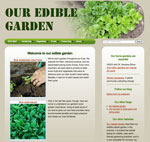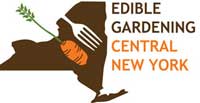Baltimore Woods Summer Nature
Day Camp
|  | Summer time is for playing outside at Baltimore Woods. Groups of children led by experienced counselors hike, explore, play, and learn about the natural world during these week long day camps.
There are a variety of camps for these age groups: ages 5-12, 4-5, and 13-15.
New summer camps include a Nature and Art camp for 4th-5th graders and themed Voyager camps for 5th-8th graders.
Register early! Space is limited, and they fill up fast.
For more information or to register, visit the Woods website or call 673-1350.
|
Learn by doing! Help maintain the zoo garden
|
 | | The zoo's habitat garden |
|
One of the best ways to learn anything is work alongside experts and other learners like yourself. A great way to learn more about habitat gardening and native plants is to volunteer to help maintain the habitat garden at the zoo. Contact Kate Woodle if you're interested. The "crew" meets Sundays 2 - 4 pm.
|
| Our Habitat Garden |  |
Visit Our Habitat Garden website for information on providing habitat, earth-friendly gardening practices, plants, and various creatures here in Central New York.
|
|
Join HGCNY!
|  |
Becoming an official member of HGCNY is easy: just join Wild Ones! When you're a Wild Ones member, you're automatically an official member of HGCNY. |
| HGCNY on Facebook |
As as more of us participate on our Facebook page, this will become a useful resource for asking (and answering!) local HGCNYers' questions about habitat gardening. |
Our Edible Garden recently updated with more resources!
|  | | Visit OurEdibleGarden.org to see an example of a Central New York edible garden, the perfect companion to your habitat garden. |
| Interested in Edible Gardening? | 
|
If you'd like to get information on Edible Gardening CNY, just email John to find out about edible gardening tours and monthly programs. Free and open to the public! |
|
Greetings!
 | | Tour a habitat garden |
Show Me, Help Me Tours
Summer is time to explore our fellow HGCNYers' gardens. We have a number of tours scheduled. They're all free and open to the public.
** JUNE **
Wed. June 27 at 6:30 pm: I'll host a tour of Stewardship Garden. (You can also take virtual tours of Our Habitat Garden and Our Edible Garden.) See Important Note below about possible cancellation! ( Directions) Sat. June 30 at 10:00 am: We've enjoyed touring Dave and Beth Mitchell's yard in previous years and seasons, watching it develop year by year into a incredible habitat garden with more and more native plants. ( Directions to the Mitchells)  ** JULY ** Sun. July 1 at 4:00 pm,
Wed. July 4 at 8:30 am,
Sun. July 8 at 4:00 pm: I'll host tours of Stewardship Garden.
IMPORTANT NOTE:
Due to the unpredictable nature of a new grandson's arrival date, please check the HGCNY home page before coming to make sure the tour hasn't been canceled! If there's no notice, the tour is still on. ( Directions to the Allens)
July TBA: After many years abroad, Bill Wallauer, a filmmaker and conservationist with the Jane Goodall Institute, has chosen Syracuse as his home base. For the last few years, the Wallauers have been transforming a typical American yard into an urban wildlife habitat and edible garden. Their 50'x150' yard includes a woodland area with spring ephemerals, a wetland area with a pond and stream, and lots of native plants. They've already seen an increasing number of birds and other creatures visiting their habitat. Address: 253 Kensington Place in the Syracuse University area. Sat. July 28 at 10:00 am: We'll tour the zoo's habitat garden with Kate Woodle as our guide. This is a large  garden area outside the entrance to the zoo, and many of our HGCNY members are helping maintain it. Since it is outside the gate, zoo admission is not required. ( Directions) ** AUGUST **
Sun. Aug. 12 at 8:30 am: We'll tour Chris's garden (I81 Cicero exit, just off Route 11). It's about a third of an acre, and she's in the process of planting it as an edible and a habitat garden. She's willing to dig herbs for people that morning! She has made a lot of progress, but could use help with native ID and would welcome ideas about what to plant. Please RSVP to Chris for directions; limited to 15 people. Sun. Aug. 19 at 2:00 pm: We'll tour Linda Rossiter's landscape near a wetland in Fulton.
~ Janet Allen
|
|
 QUESTION: QUESTION: What worms are native to our Great Lakes region?
The answer is at the end of this newsletter.
|
|
Featured plant: Flowering Raspberry
 | Flowering raspberry
(Rubus odoratus)
|
Oddly, flowering raspberry (Rubus odoratus) isn't commonly grown. Why not?
It has attractive roselike fragrant flowers, is easy to grow in sun to light shade, and provides food for birds and butterflies. The fall foliage is an attractive golden color.
 | |
Two-year-old plant
|
Further, unlike brambles, it doesn't have thorns or spines, and its fruit is edible (though in my opinion more in the "it won't kill you" category rather than the "tasty" category). Although plant guides suggest moist, well-drained soil, mine is growing very well in regular well-drained soil.
 | |
Flowering raspberry fruit
|
Depending on your landscape plans, a possible disadvantage is that it will form a large mound up to 6 feet tall and 6-12 feet wide. [I'm cutting out any stems beyond six feet.] On the other hand, it's an attractive way to fill a largish space.
Read more... |
|
Cats Indoors!
 | | The culprit was a cat |
It's heartbreaking to provide habitat for birds in our landscapes only to see them fall prey to one of the world's most effective predators: the domestic house cat.
They were introduced to North America just a few hundred years ago, and so native wildlife has no defenses against them.
According to the American Bird Conservancy,
* Domestic cats retain their hunting instinct, and well-fed cats continue to kill birds.
* The number of pet cats in the U.S. has increased threefold in the last 40 years and approximately 65% of these are roaming for some portion of the day.
* These free roaming cats, added to the 80 million feral cats, total an estimated 140 million cats, which kill on average at least 1.4 million birds per day.
In addition to the danger to birds and other wildlife, feral cat colonies spread diseases, such as rabies (more cats than dogs were reported rabid in the U.S. between 2000-2004) as well as toxoplasmosis, dangerous for pregnant women.
Of course, free-roaming cats--both feral and pets--face many dangers, too.
Read The American Bird Conservancy's two new brochures:
* Trap, Neuter, Release: Bad for Birds, Bad for Cats
* Cats, Birds, and You - provides tips for having a happy indoor cat |
|
Our Native Plant Shopping Guide tells you where to find native plants
 | |
(Click image to download)
|
To help you find native plants in CNY, we've compiled a list of plants offered by several local nurseries. REMEMBER, nurseries can sell out of any particular plant, so it's a good idea to call before setting out on your shopping trip! DOWNLOAD: This guide is available online as a free .pdf download. |
|
ANSWER to: "What worms are native to our Great Lakes region?"
 | | You can download and print this poster (Click on poster) |
NONE!
This isn't true for most of the U.S., though. Only areas of the continent that were covered with glaciers have no native earthworms.
And they're a problem.
At first, this is REALLY hard to believe. Didn't we all grow up learning about the value of worms for our gardens?
Although worms may indeed be good for our vegetable gardens, these non-native invaders are causing big problems for natural areas beyond our yards.
Here are some of the things you can do to prevent their spread:
- If you use earthworms as fishing bait, throw any unused earthworms in the trash, not in the water or on the land.
- If you use earthworms for composting , before you use the compost, freeze it solid for at least 1 week (a month is better). If you live in an area that gets sub-freezing temps for at least a month straight each winter, you can do this by putting a bucket of the compost in an unheated building for the winter.
- Do not transport leaves, mulch, compost or soil from one place to another unless you are confident that there are no earthworms or their cocoons present.
- If you use ATV's or other vehicles with tread that can hold soil, be sure to wash all soil from tire treads before transporting the vehicle from one place to another.
Learn more from Great Lakes Worm Watch: * Forest ecology and worms - fascinating photos! * How to join the citizen research team * Forest ecosystems - great for teachers! * Resources for educators * and lots more at Great Lakes WormWatch |
|
|
|
|